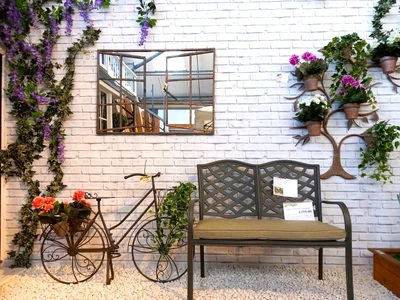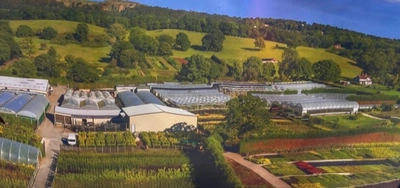
Planting bulbs is a quick and simple job, but it will bring big rewards in Spring when your start to see the first green shoots emerge after a long, dark Winter. Autumn really is a great time to plant flowering bulbs as the soil is still warm, allowing them to develop a good root system ahead of the colder months. It’s also an easy way to get your Millbrook minis involved in the garden, learning how plants grow and watching their flowers 'magically' appear from the ground.
How should I decide which bulbs to buy?
There are five key things to think about when choosing bulbs.
- Colour.
- Which month it’ll bloom.
- Height of the plants.
- Which month they need to go in the ground.
- How deep they need to be planted.
You can plan a different spectacular display each month with this information. Read the packaging in store, or ask one of our helpful team for advice.
When can you plant bulbs?
Buying your bulbs in advance means a better choice, but you will also need to store them well – making sure you keep them dry and cool ahead of planting out. If they’re soft or rotting, then throw them away, but if they’ve already sprouted or look a little bit past their best, plant them anyway, you might just be lucky! Plant bulbs that will flower in Spring/Summer, such as daffodils, hyacinths, crocus and alliums out in late September/early October. Plant tulip bulbs in November, before the first frosts.

Why can’t you just plant them in Spring if that’s when they grow?
Bulbs need a long dormant period in cold temperatures for healthy root development.
Can you plant bulbs in containers?
Yes absolutely! Bulbs will be happy in containers or in open soil as long as the soil is well-drained. We advise using Miracle Gro Peat-Free Bulb Fibre, or Empathy Bulb Starter with Rootgrow. Here's our handy guide to planting a bulb container.
How do you plant bulbs?
Bulbs need to be planted top side up, or sideways. It’s the thinner end of the bulb that should face upwards. As a rule of thumb, plant bulbs 2-3 times the depth of the bulb you’re planting. We would recommend planting bulbs in groups of six, but for a really good display, consider planting around 25 to 50 bulbs. If you want to naturalise bulbs in grass, throwing them up in the air and planting them where they fall will give you a natural, random effect, or plant them haphazardly in borders or under trees for a woodland look. Bulbs won’t grow if you plant them too deep, or upside down and although they will flower for the first year in almost any position, they won’t re-flower in following years unless they’re getting the right levels of sunshine or moisture.

How much water do they need?
Once you’ve planted them, give them a good water as this will help the roots develop. After that, while they’re dormant, you can water less frequently but make sure the soil doesn’t dry out. When the first green shoots appear, begin watering regularly again.
What else will help them grow their best?
Add a handful of general purpose fertiliser when the green shoots appear in Spring and then feed regularly, every 7-10 days. A liquid tomato feed which contains potassium is a good bet.
Did you know…?
…You can ‘lasagne layer’ your bulbs for weeks of Spring colour. Start with the biggest bulbs and plant them 3 to 4 times the depth of the bulb, then layer up with tulips, small narcissi, crocus etc.




